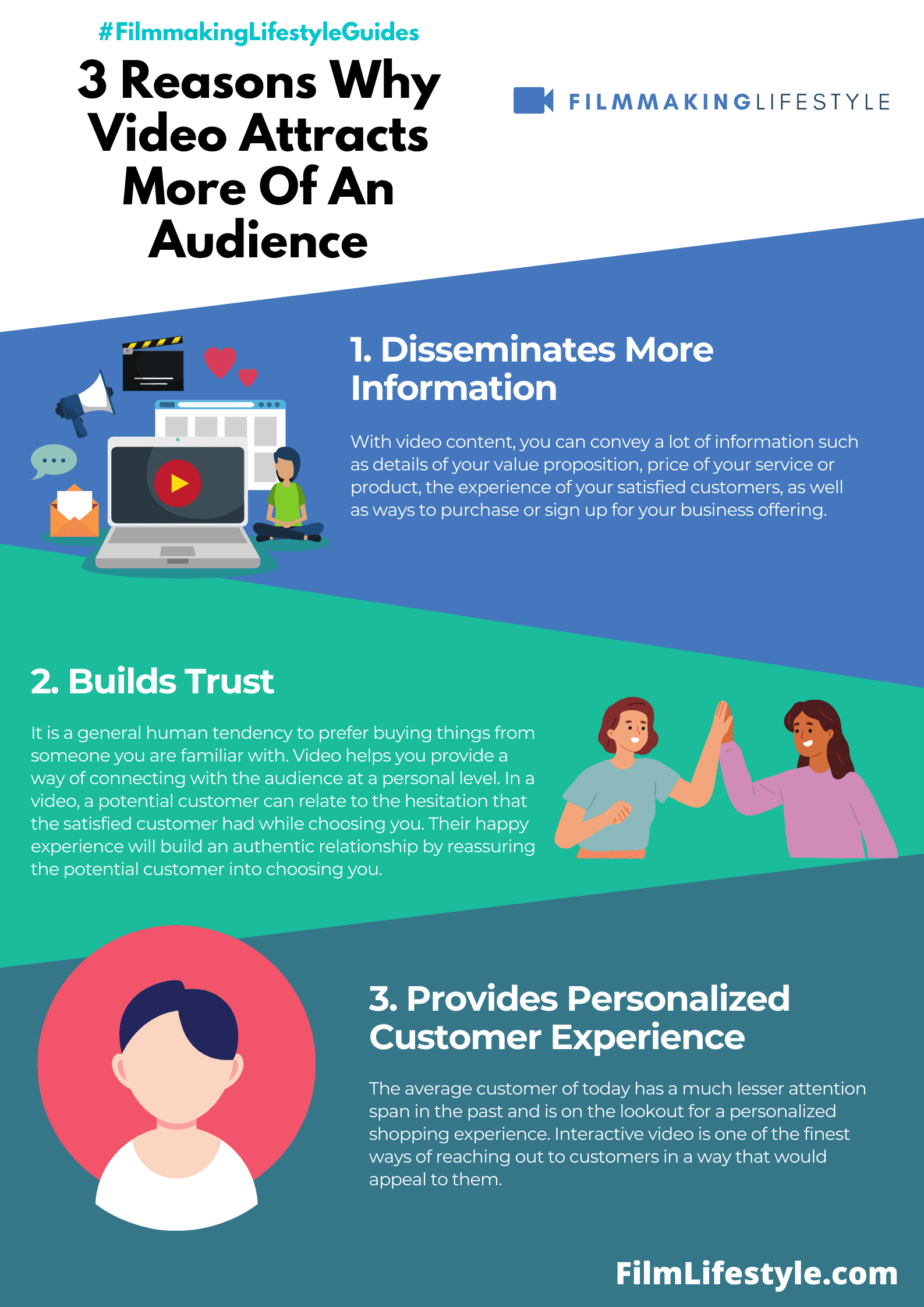Traditionally most advertising campaigns were textual and leveraged the power of verbose content to explain the effectiveness of a product or service.
With an improvement in digital and print technologies, the usage of images in marketing posters and television advertisements became popular. Since humans are visual, such campaigns gathered better results than ones that had only textual matter.
Over the years, access to audio and video recording devices became easier, and more and more people took to video making tools. This has resulted in a long-standing debate on whether images garner better viewer response than video.
Considering that it requires greater efforts at scripting, filming, and editing a video, people and brands are often skeptical about investing unless they are sure of the results.
In this article, we plan to dispel all such doubts by providing an unbiased approach to identifying the best means of reaching out to your target audience.
Coexistence Of Image & Video
The first and foremost thing that you need to remember is that there is no undisputed winner in this competition.
For example, videos get a much better response when you are expecting views and engagement from the audience. In a social media setup, such engagement would mean likes, comments, and shares.
However, if you are aiming at getting the audience to click on something, an image will work better.
When an average person scrolls past their social media feed and comes across a promotional image from the brand, it usually takes them about 3 seconds to decide whether they will click on the photo ad. In the case of a video, the decision making takes much longer.
Thus, if your target group is the modern-day audience with a dwindling attention span, you will need to use a combination of images and video to catch their eye.
Also, if your focus is on driving engagement through video, the type of video that you settle for will decide how many people view it.
Disseminate More Information With Video
One of the major advantages of video is the fact that you can give out a lot more information in your video than what would be plausible with an image.
If you try to put too much ad copy in a promotional image, chances are that it may come off as too overwhelming for the audience. This would cause them to scroll past the copy without bothering to read it.
Similarly, having too little information on a printed image advertisement may be insufficient to attract the audience.
With video content, you can convey a lot of information such as details of your value proposition, price of your service or product, the experience of your satisfied customers, as well as ways to purchase or sign up for your business offering.
That way, your prospects do not have to go through the hassle of reading long lines to texts to get the information that they need to make well-informed decisions.
By simplifying things for your potential customers, you increase their chances of purchasing from you.
Build Trust With Video
It is a general human tendency to prefer buying things from someone you are familiar with. Video helps you leverage this by providing a way of connecting with the audience at a personal level.
These days, video allows you to go beyond talking about a product’s advantage and illustrate its unique personality.
For example, if you can show videos of satisfied customers talking about their experience with you, it is likely to generate better results than a textual or image-based review.
In a video, a potential customer can relate to the hesitation that the satisfied customer had while choosing you. Their happy experience will build an authentic relationship by reassuring the potential customer into choosing you.
Use Video To Personalize Customer Experience
The average customer of today has a much lesser attention span in the past and is on the lookout for a personalized shopping experience. Interactive video is one of the finest ways of reaching out to customers in a way that would appeal to them.
For example, let us consider the situation wherein your brand is launching a new product or service.
You can consider coming up with interactive videos that tell the consumer what the product is all about. This is especially useful when you are launching a new product and need the consumer to understand the applications and utility of the same.
Most users are not likely to read through long lines of textual or image-based pamphlets.
With video, you are able to convey a lot more in a shorter time, and that aids in getting the brand message across to the potential customer.

Another efficient way of leveraging video to achieve a personalized customer experience is to come up with video testimonials of satisfied customers.
Understand that a potential customer is more likely to relate to someone who has been in the same shoes as them.
In such a situation, if you can give them genuine relatable products they are more likely to connect with what you offer and make the purchase.
Use Video To Establish Yourself As A Thought Leader
Irrespective of your business domain, you cannot expect your business to grow simply because your target groups know your brand or like your presence.
You need to walk the extra mile and establish yourself as a thought leader. Using video, you can demonstrate your ideas and earn their trust.
Ideally, you should take a step-by-step approach wherein you first familiarize your audience with the problem and then explain how your business aims to solve it.
If you are launching a new product, chances are that a good fraction of your target audience has not realized the need for what you are offering.
Another way of establishing yourself as an industry veteran would be by filming videos wherein you educate the audience on a core concept that is relevant to your business or talk about your views on the latest laws, amendments, and current affairs.
As the viewer can observe your body language, it becomes much easier for you to convey your message. Such a thing would not be possible with just images.
Optimizing The Labor Versus Result
While, in most cases, videos drive better engagement with the audience, the major challenge that brands face is the creation of such videos.
Crafting a video is a labor-intensive process and takes a significant time to create something that will stand out.
While it takes 2 to 6 hours of work on average to create a promotional video for social media, and an efficient image-based advertisement can be created in less than an hour.
If you do not have a lot of time to spare but are keen on an advertising campaign that would garner audience engagement, you can consider experimenting with different types of videos.
For example, short video content or live videos are usually spontaneous and do not demand excessive editing.
Since live videos are available only for a few hours, people suffer from the fear-of-missing-out on them and give such videos higher priority. That way, it becomes easier for your brand to get the message across.
Thus, you see that videos are better received by today’s audience. Easy access to smartphones and high internet penetration has enabled this trend.
As a brand, if you can design your advertising campaigns as a combination of images and video (with a higher focus on video), you increase the odds of striking a chord with your target audience.
Matt Crawford
Related posts
2 Comments
Leave a Reply Cancel reply
This site uses Akismet to reduce spam. Learn how your comment data is processed.








This post is really amazing.
Thanks!